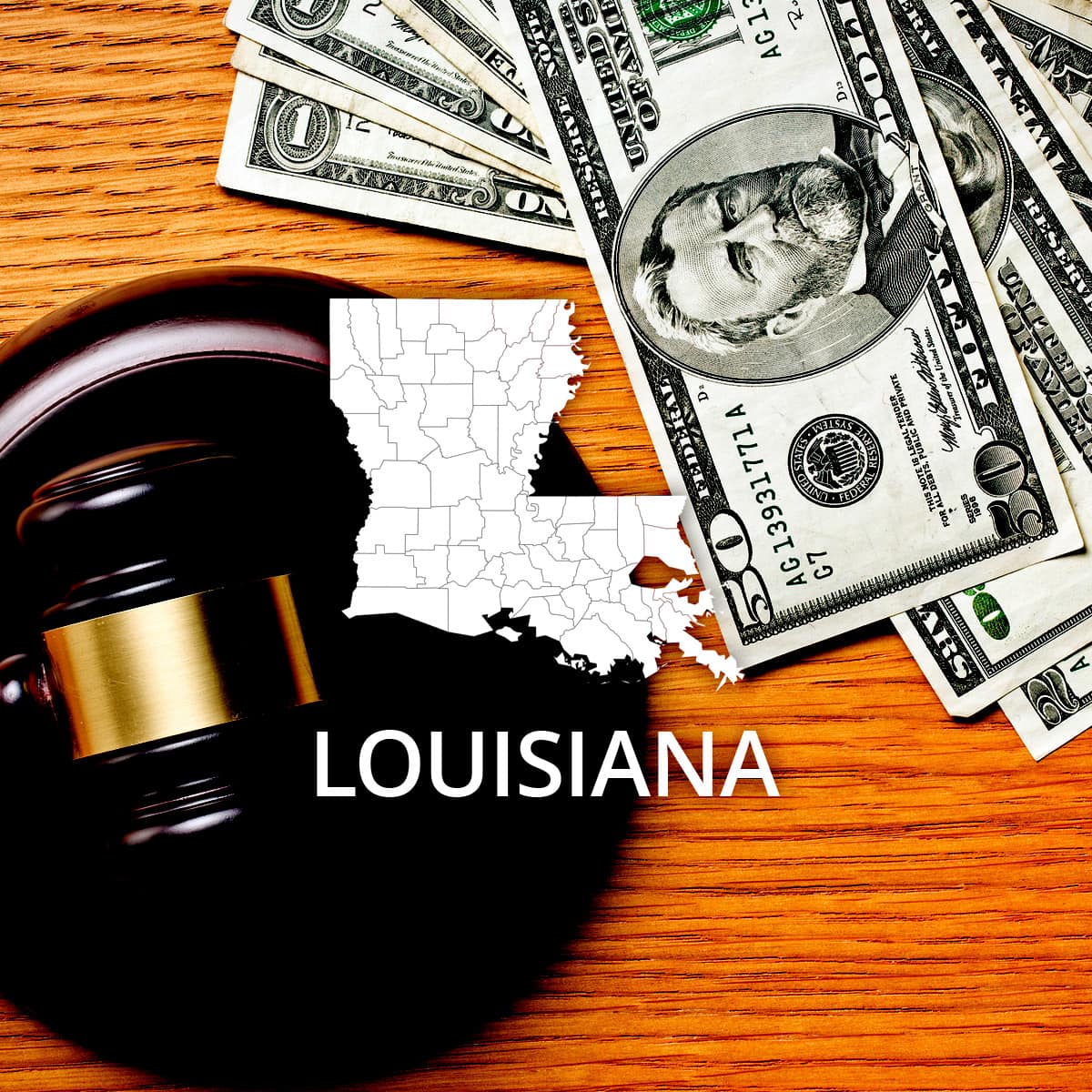How to File Bankruptcy in Louisiana
 Bankruptcies must adhere to federal regulations as recently outlined by the 2005 Bankruptcy Act. Each state has district courts for local residents to file bankruptcy. In Louisiana, there are three districts: Eastern, Middle, and Western. A petitioner may choose one of the many court locations to file for Chapter 7, Chapter 11, Chapter 12 or Chapter 13 bankruptcy.
Bankruptcies must adhere to federal regulations as recently outlined by the 2005 Bankruptcy Act. Each state has district courts for local residents to file bankruptcy. In Louisiana, there are three districts: Eastern, Middle, and Western. A petitioner may choose one of the many court locations to file for Chapter 7, Chapter 11, Chapter 12 or Chapter 13 bankruptcy.
Filing for Chapter 7, Chapter 13, and Other Types of Bankruptcy
Chapter 7 bankruptcy is a popular option for those looking to eliminate the most debt. However, not all people are eligible and it requires losing most assets that are non-exempt to pay outstanding debt. The non-dischargeable debt from things like child support, back taxes and student loans are often not included and remain the responsibility of the petitioner.
Another option is Chapter 13, which doesn't eliminate debt but minimizes and restructures payment of debts so they are more manageable. Individuals and married couples opt for Chapter 13 when they wish to keep their home and cars and have a steady stream of income, but are bogged down by debt and interest charges.
For businesses, Chapter 11 is an option to keep the business up and running, but have relief from debt. This is done by reorganization as well and typically a business can pay outstanding balances in a period of 3 to 5 years. Chapter 12 is similar to Chapter 11, but written specifically for family farmers and fishermen to continue their operations and repay heavy debt loads without losing assets or having to sell.
Official bankruptcy forms for the U.S. Bankruptcy Courts are available at http://www.uscourts.gov/forms/bankruptcy-forms or RecordsFinder.com Court Forms Section.
Steps to Filing Bankruptcy
According to the 2005 Bankruptcy Act, all petitioners for bankruptcy must undergo credit counseling within 6 months prior to filing. Some individuals find that they can repay debt on their own, while others choose the course of bankruptcy. If bankruptcy is chosen there are several other steps to follow.
The first step is to determine which type of bankruptcy a petitioner is eligible for based on their income over the last 6 months. This is done by way of a Means Test and compares the debtor's income with all other workers from the state of Louisiana. If the petitioner's income is found to be lower, he or she may file for Chapter 7 or Chapter 13. Higher income petitioners have the option of Chapter 13 only.
Paperwork must then be collected for the court to show financial history of the petitioner. This may include, but is not limited to: tax records from the last 2 years, deeds to property, and titles on vehicles, a list of all debts, an inventory of possessions, loan information, and monthly expenses.
What is known as "the schedule" for the court is then created, using the aforementioned documents, necessary forms for filing, and a summary of repayment for Chapter 13 bankruptcies. Some petitioners find it helpful to hire legal counsel to file, while others choose to file their bankruptcy on their own. To file for Chapter 7, there is a fee of $306 which can be waived in some cases. The fee for Chapter 13 is $281 and cannot be waived, but may be paid in installments. Of course, legal counsel fees are the responsibility of the petitioner.
After the bankruptcy is filed, an automatic stay is issued by the court. This keeps creditors from contacting the debtor and will halt any foreclosure proceedings. A court appointed trustee then gathers the non-exempt assets to liquidate for repayment of outstanding debt. It is also the trustee's responsibility to hold a 341 meeting where creditors and the petitioner may negotiate terms. If no agreement can be made, a judge will intervene.
Lastly, all petitioners must complete a court approved financial management course to complete their bankruptcy. And all those who have filed Chapter 13 must continue making the agreed upon payments over the 3 to 5 year period of repayment to avoid returning to court.
Eastern District of Louisiana Bankruptcy
Louisiana consists of an Eastern, Middle, and Western District to hear bankruptcy cases. The Eastern District has just one location, New Orleans, which has jurisdiction over 13 counties. Baton Rouge is the only court location for the Middle District. And finally, the Western District has 5 cities with courts, they are: Alexandria, Lake Charles, Monroe, Opelousas, and Shreveport.
